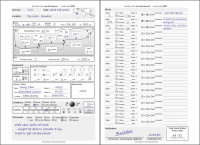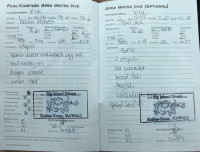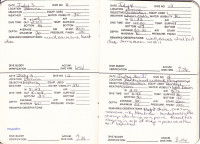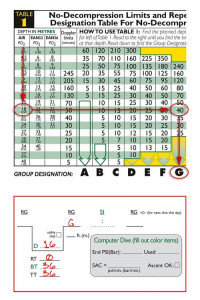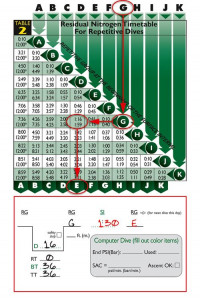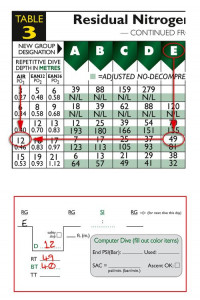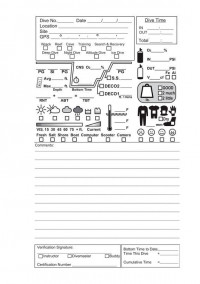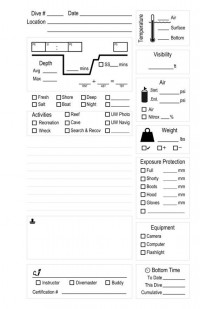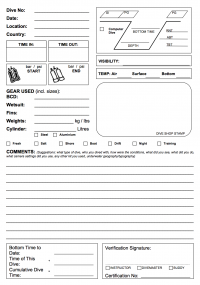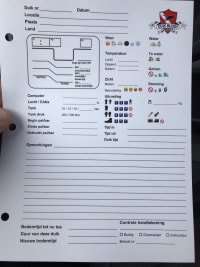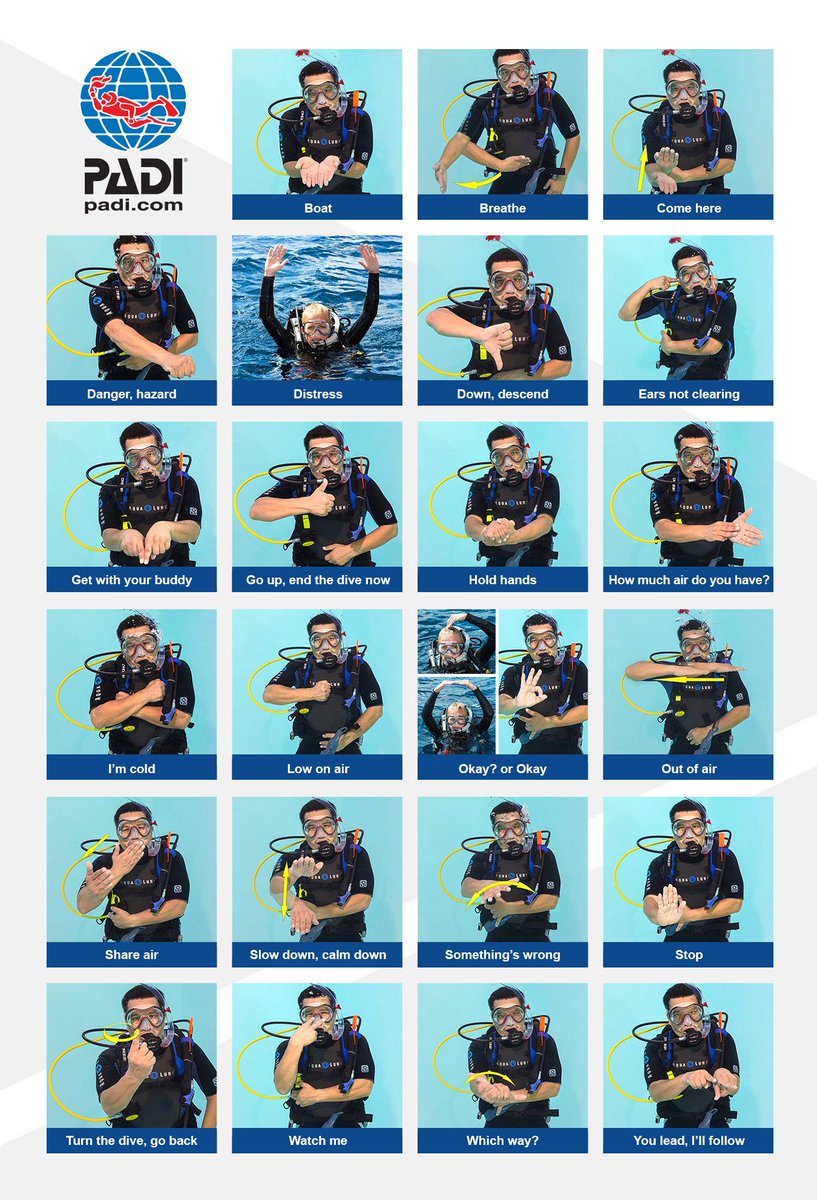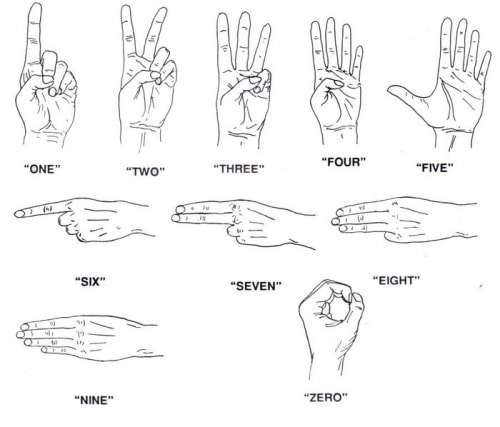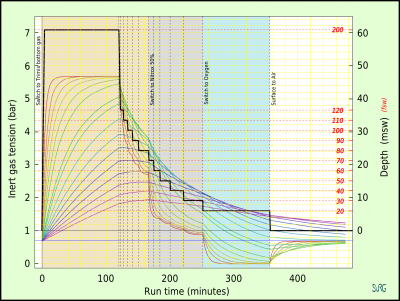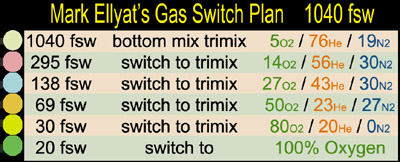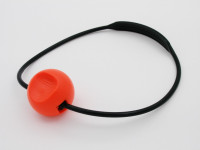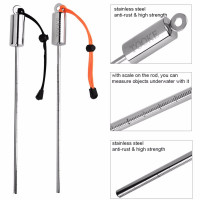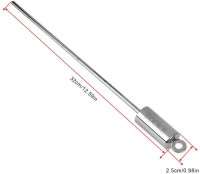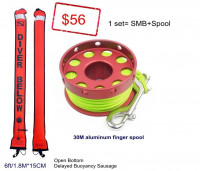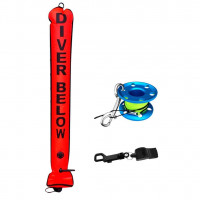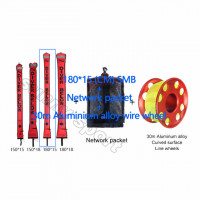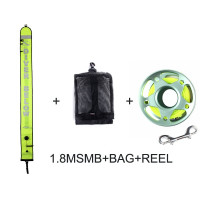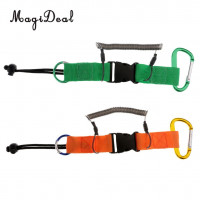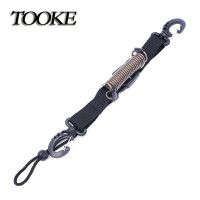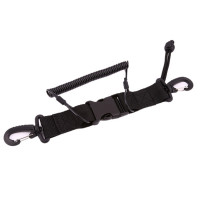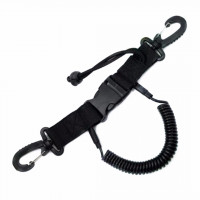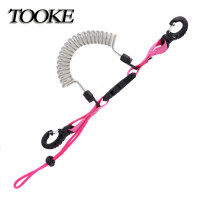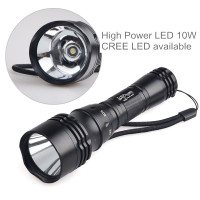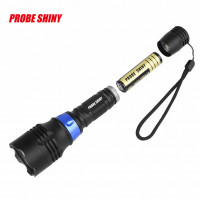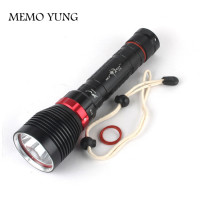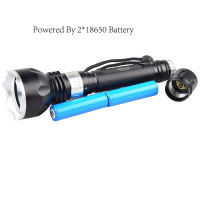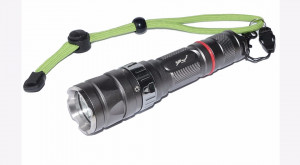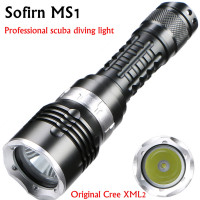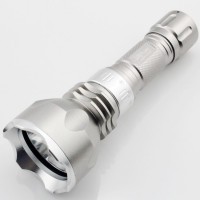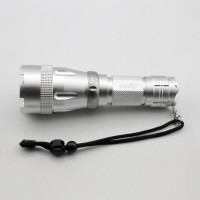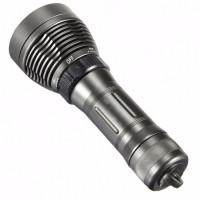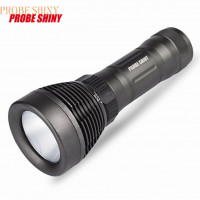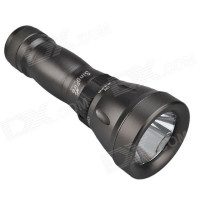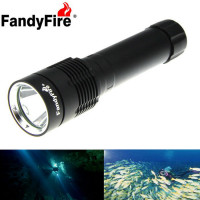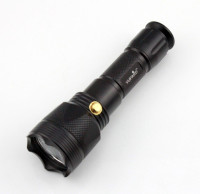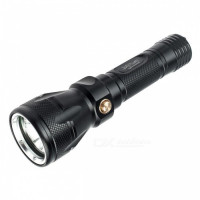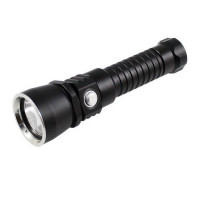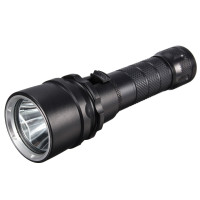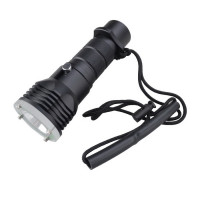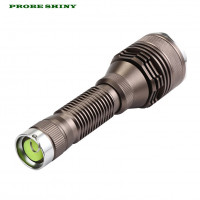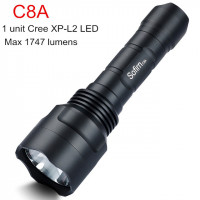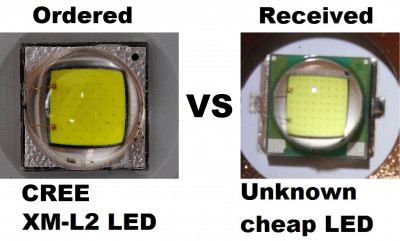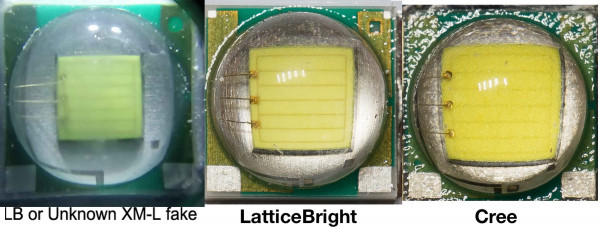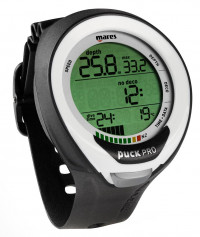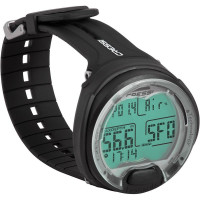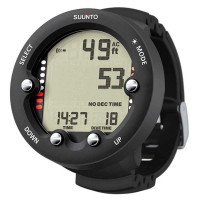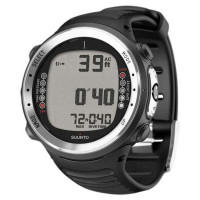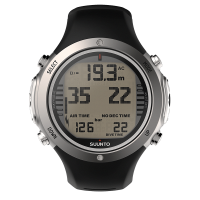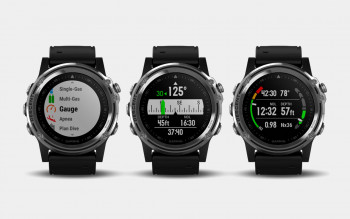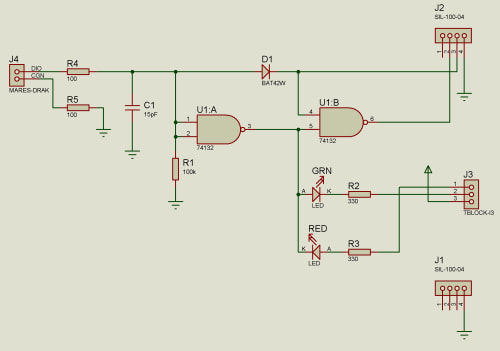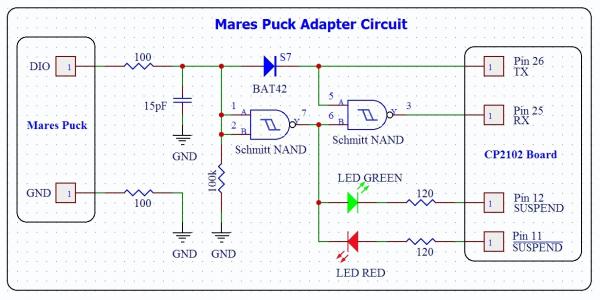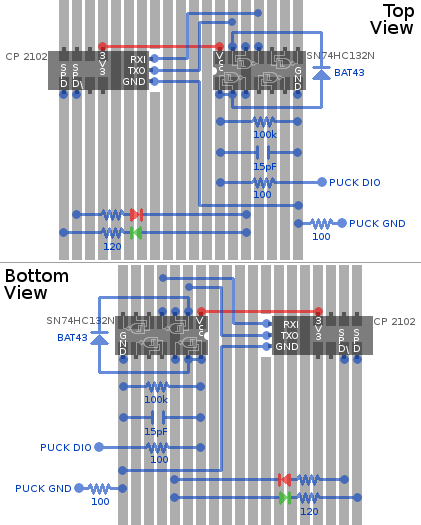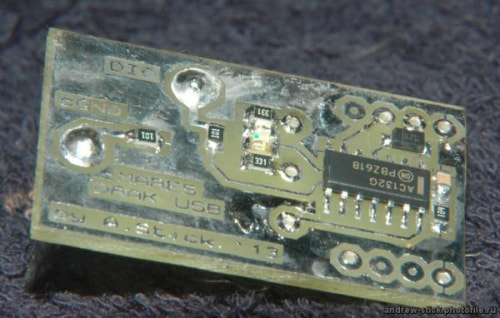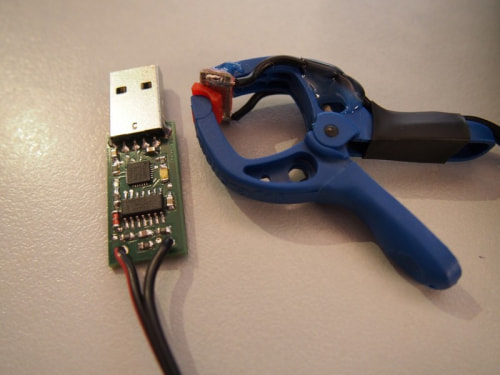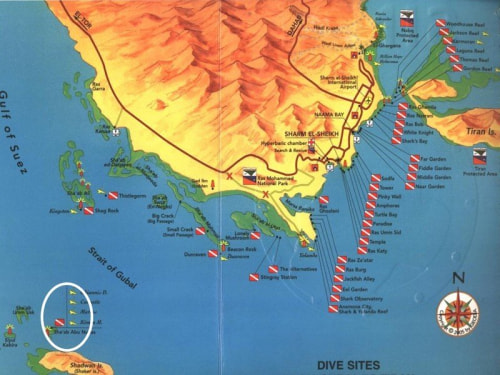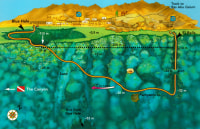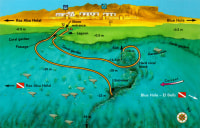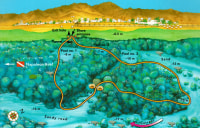Diving
Water temperature:
The Basic Rules of Scuba
- Breathe continuously.
Lung overexpansion would occur if an untrained scuba diver ascended from depth without exhaling. That is why exhaling is a part of many underwater exercises. - Ascend slowly and maintain control.
Never exceed an ascent rate of 9 meters per minute. - Never dive alone or beyond your level of training or limits.
Diving with a buddy is the only way to dive — you should never dive alone! A buddy provides a second Total Diving System, psychological well-being and the comfort of someone to assist you underwater. As a general rule, never let your buddy be further away from you than you would want to swim if you were out of breathing gas. Realistically, this is one or two body lengths at most. A buddy assists in dive planning, suiting up, pre-dive equipment check, water entry support, assistance throughout the dive, post-dive equipment maintenance and logging dive information. - “Stop, Breathe, Think and Act” to regain control and make an intelligent decision in difficult situations.
SSI Responsible Diver Code. I pledge to:
- Dive within the limits of my ability and training.
- Evaluate the conditions before every dive and make sure they fit my personal capabilities.
- Be familiar with and check my equipment before and during each dive.
- Respect/know the buddy system and its advantages.
- Accept the responsibility for my own well-being on every dive.
- Be environmentally conscious on each and every dive.
Some techniques to prevent the panic response in yourself
- Respond properly.
Proper responses must be second nature in difficult situations. Remember the “3-R Rule”: Regain Control, Respond, and React. - Take speciality training for the type of diving you are going to do.
Most divers who find themselves in a difficult situation admit this was caused by either breaking the Basic Rules of Scuba or doing something they weren’t trained for. - Honestly evaluate your diving limitations.
The need to succeed or please someone often drives people beyond their limits. Be honest with yourself. Do not dive if you feel, for any reason, that you should not. Do not let your spouse, family, friends, peers or anyone force you into making a dive that you do not feel comfortable making. You know your capabilities better than anyone else. Remember, diving is meant to be a fun sport and it can’t be fun if you’re stressed to the point of panicking. - Properly maintain your Total Diving System. Follow the SSI Equipment Service Program.
- Introduce only one new variable to your diving at a time.
For instance, if you have never done a night dive, wreck dive or boat dive, doing a night-time wreck dive from a boat is a potentially intimidating combination. Instead, get proper instruction for each of these speciality environments and do a wreck dive, then a night dive in a familiar setting and a boat dive before combining all three. You are meant to enjoy the experience, not be overwhelmed by it. There has never been a proven substitute for experience, nor is there any known shortcut!
If you observe signs of panic in your buddy while on the surface:
- Completely fill your buoyancy compensator device (BCD).
- Calmly talk to your buddy and, from a distance, instruct your buddy to establish positive buoyancy.
- If required, approach your buddy and ditch his weights and inflate his BCD.
- Help your buddy find the position where breathing is the most comfortable.
- If he/she does not respond or attempt to grab the rescuer, establish control by swimming around or under them (recommended if the water is not deep enough). Ascend behind the diver and grasp the back of the cylinder valve at arms length.
- Never needlessly endanger yourself! Seek additional help if necessary.
Dive tables and divelog
Terminology:
- Surface Interval Time (SI): The amount of time the diver stays out of the water or on the surface between dives, beginning as soon as the diver surfaces and ending at the start of the next descent. Should be more than 10 minutes otherwise the following dive is considered the same dive and not a repetitive dive.
- Bottom Time (BT): The amount of elapsed time from the start of your descent until the start of your ascent (usually till safety stop).
- Residual Nitrogen Time (RNT): Excessive nitrogen pressure still residual in the diver at the beginning of a repetitive dive, expressed as minutes of exposure at the planned repetitive dive depth. On your first dive you have zero residual time because you have not yet completed a dive.
- Total Dive Time (TT): The total amount of elapsed time from the start of your descent until you reach the surface including ascent and decompression stop time.
- No-Decompression Limit (NDL): A time limit for the amount of time a diver can stay at a given depth.
- Decompression Dive: Any dive which exceeds the No-Decompression Limits at a certain depth, so that a direct ascent to the surface is not possible and mandatory decompression stops must be made to eliminate excess nitrogen accumulated during the dive.
- Repetitive Group (RG) Designation Letter: The letter assigned after a dive that indicates the amount of residual nitrogen remaining in the diver’s tissues.
- Pulmonary Oxygen toxicity measured by the addition of Oxygen Toxicity Units (OTU)
- In dive log:
Total Bottom Time (TBT) = Actual Bottom Time (ABT) + Residual Nitrogen Time (RNT)
Safety Stop (S.S.)
Divelog examples:
Divelog templates / empty pages:
- JD Dive Log Pages PDF (local copy (113.3 KiB, 133 downloads))
My compilation of above samples can be downloaded from here (OpenOffice source)
Divelog software
Refresh
- “Open Water Diver (OWD)”:
- Section 4 → “Calculating Gas Consumption and Time at Depth”
- Section 6 → “Avoiding Panic”
- Section 6 → “Proper Response to Difficult Situations”
- Section 6 → “Decision Matrix”
- “Risk Awareness (RA)”, sections 1 and 2
- “SSI Skill Review”:
- “Snorkeling Skills” → “Buoyancy Check with a Total Snorkeling System”
- “Out-of-Water Exercises” → “Scuba System Assembly” (see How to Assemble Equipment)
- Secure the cylinder with the air valve opening facing towards the BC
- Inspect the o-ring that creates the seal between the cylinder valve and the first stage
- Secure the strap and buckle of the BCD around cylinder
- Verify cylinder is tightly secured to the BCD by pulling BCD up
- Attach the delivery system to the cylinder valve and gently tighten
- Attach the low pressure inflator hose to the BCD
- Check the primary and alternate regulators for leaks by inhaling gently (inhalation should not be possible)
- Place the information system facing down and away from you and others
- Slowly open the cylinder valve, listening for leaks
- If no leaks are noted, completely open the valve and rotate a half turn back from full open
- Check the information system to confirm their is enough gas in the cylinder
- Check the performance of the delivery system and the air quality by inhaling a few breaths from the primary and alternate regulators. Clean breathing gas is colorless, odorless, and tasteless. If the breathing gas has any odor or taste, do not dive with that cylinder!
- Completely inflate the BCD, checking the function of pressure relief and dump valves
- Monitor the BC for leaks and then vent the air
- Place the primary and alternate regulators, the information system and any other hoses inside the BCD for protection
- Close the valve and secure (put down) the Total Diving system on the ground where it won't present a hazard to others
- “Out-of-Water Exercises” → “Pre-Dive Check”
- “Out-of-Water Exercises” → “Scuba Unit Disassembly”
- “Deep Water Exercises” → “Air Sharing Ascent” (see Underwater Skills and Lessons)
- “Deep Water Exercises” → “Emergency Swimming Ascent (ESA)”
- “Deep Water Exercises” → “Emergency Buoyant Ascent (EBA)”
- “Hand Signals” (see also Diver communications and Scuba diving hand signals)
Wetsuit sleeves should be rolled over the outside of the gloves.
Most find wearing the computer on the right side more convenient since your left arm/hand can be occupied with the inflator hose. You do need to closely monitor your depth during ascents/descents, safety stops / deco stops, and you often need to operate the inflator/dump to control your depth at the same time.
CNS-O₂ hit in deep water may not be less serious symptoms to serve as a warning before a full convulsion is precipitated. According to oxygen physiologists Stephen Thom and James Clark, “Minor symptoms did not always precede the onset of convulsions, and even when a preconvulsive aura did occur, it was often followed so quickly by seizures that it had little practical value.” Oxygen convulsions, per se, are not inherently harmful. But imagine the implications for an untended diver or even one with a buddy nearby. Management of an airway and rescue in such an extreme situation is nearly impossible, and the diver will almost certainly drown.
100% reported by a dive computer is a maximum threshold limit.
Most dangerous symptoms:
- Spasmodic vomiting
- Fibrillation of lips
- Twitching of lips, cheeks, nose or eyelids
- Syncope (fainting)
- Convulsions (similar to epilepsy)
The number of the Total dives at the Achievements section on the app will only show the verified number of dives.
The number of dives will only change if:
- A SSI Dive Center / Dive Pro QR Code was scanned and the last dive with a higher number was verified
- A SSI Dive Center does update the number of dives in your profile
- You receive a new C-Card with a higher number of dives than before
Many divers just log their dives and once in a while the go to any SSI Center to get verification on their latest dive (to update the Total Dives in the Awards), their deepest or longest of these values were updated.
The longest / deepest dive shown will update only, if the dive was verified by scanning a SSI Divecenter / Dive Pro QR Code.
Video
Diving accidents
- Explosive decompression incident took place in 1983 instantly killed 6 divers – describes the risks, consequences and nature of saturated diving and occasional decompression
Diver panic:
- Divers react to a situation when a diver rips off somebody's mask to calm him down – maybe the divers were making a rescue course, hence one diver was acting as panicking diver? Because panicking diver does not hold his fins in confident way.
Diver is attacked:
Drowning / run out of air:
- Chris Lemons is cut off from his ship at 265feet below the waterline. Partial Pressure for Divers.
- Divers react to two divers who ran out of air underwater – suggests to take air out of your BCD or even breathe with it.
- Divers React to Horrifying Underwater Accidents caught on camera – a story of disoriented young man who has run of air.
- Cave diver reacts to scuba diving accident intervention – tells us to look for your buddies.
- What happens when your are out of air – at about 8 bar (depends on producer) 1st stage cannot deliver enough pressure to 2nd stage, hence you start to struggle with breathing (need to suck air). This does not happen immediately / develops over the time.
Safe & Rescue
- CPR: CardioPulmonary Resuscitation
- AED: Automated External Defibrillator
- EMS: Emergency Medical Services
- PPE: Personal Protection Equipment
- FBAO: Foreign body airway obstruction
Ways to introduce your help (especially in USA):
- Hi, my name is [Your Name]. I'm trained in first aid. Can I help you?
- Do you hear me? I'm [Your Name] and I know first aid. I'm here to help you. Is that okay?
CPR rates:
- 30:2 ratio of chest compressions to rescue breaths for adults.
- 15:2 ratio of chest compressions to rescue breaths for infants and children.
 Do not use AED an oxygen rich environment, which means remove the oxygen mask before doing the electrical shock.
Do not use AED an oxygen rich environment, which means remove the oxygen mask before doing the electrical shock.
 Perform CPR for about one minute before going for assistance if you have to leave the victim, unless you witness the victim suddenly collapse. In last case you know there is some time in reserve.
Perform CPR for about one minute before going for assistance if you have to leave the victim, unless you witness the victim suddenly collapse. In last case you know there is some time in reserve.
See also:
P50:
* Insist that all drowning victims obtain medical attention, even seemingly minor incidents. Complications that can cause death may occur hours after any drowning incident e.g. due to heart fibrillation. * A person who has drowned will have some water—even only a small amount—in their lungs which causes an irritation and the lungs do not inflate as easily as normal. * The problem is a decreased ability to transfer oxygen from the lungs to the blood, which can compound itself with time. * Victims swallow all the water that they can hold in the process of drowning. * Fluids coming out of a drowned victim typically come from the stomach, not the lungs. * Do not push on the victim’s distended abdomen.
P.55: If the bleeding is still not controlled, remove the dressing and bandages to ensure the actual bleed site is covered and start again. – Could be a waist of time? P.56: Avoid giving the victim anything to eat or drink unless response is delayed. – What is that delay? 30 mins? P.59: Rinse the affected area immediately with cool running water for 20 minutes. – Contradiction with what said in the class.
* If person is conscious, should we ask him something to detect spinal injury? Like “Do you feel your legs?” * If you attach AED and it detects a healthy heart beat / activity, how does it signal that to you? * How effective is CPR if airways are not effectively cleaned after back blows or abdominal thrusts? * Checking AED state - who is responsible for checking it? * Advise for children for best position when uncomfortable in the water? * Types of emergency situations, sorted by frequency. * Freediving course: Provided you have a 2nd helper: blow at victim check and gently slap it * Arterial Gas Embolism falls (can cause an immediate loss of consciousness) under neural trauma?
respiratory arrest cardiac arrest morbidity reckless behavior erratic behavior jeopardy oropharyngeal airway chest recoil yelling relinquish responsibility agitated mucus membranes lucid numbness summoning EMS choking on vomit vomiting person venomous bites or stings pelvis and limbs (extremity) thigh fetus cadaver supine victim swelling bruising rigidity incoherent speech pupil dilation ischaemic injury gasping breaths sternum jaw-thrust method mandible nostrils regurgitate sternum abdomen inanimate objects decreased gag reflex aggravated towing spurting blood irrigation syringe saline tube platelets seal blood vessel bruises charred muscle twitching seizure charred, leathery skin perineum tugging peeling skin strain contusion (bruise) spasm (cramp) pulled muscle (strain) sprain choking vertebrae Caustics intestines barb Itching groin armpits rehearsal flaunt murky rigorous rigidjerky perishable apprehensive supine kelp tow thrashing stranded kelp maladies
Lack of mental preparedness, mental control, and mental coping
Surface Marker Buoy (S.M.B.) inflation
Other
Documentary:
Movies:
FAQ
How to check pro buggy using his number?
If you find yourself underwater in a car
- Don't waste energy trying to push the door.
- Do not open the window, the force of the water entering the car will prevent you from getting out.
- Remove the headrest.
- Use the sharp steel point of the headrest to break the rear window, which has glass designed to be ejected (I didn't know that).
By engineering and design, the car is meant to float on water, and the rear window will always face the exit.
What is the maximum diving depth?
- 55 metres – maximum diving depth with air as at this depth ppO₂ for normal air (21% oxygen) is 1.4
- 33 metres – maximum diving depth with Nitrox EAN32
- 332 metres – world record for deepest dive on Scuba
![]() The recommended depth for OWD is 18 meters, and with Deep Diving specialty is 40 meters.
The recommended depth for OWD is 18 meters, and with Deep Diving specialty is 40 meters.
Check also Calculators.
What is the minimum safe lower limit for the partial pressures of oxygen and nitrogen?
- Oxygen (ppO₂): 1.1 is safe, 1.4 is recommended maximum, 1.6 is absolute maximum. This results:
(1.4/0.21-1)×10 = 56.66meters max depth with normal air(1.4/0.32-1)×10 = 33.75meters max depth with Nitrox EAN32)(1.6/1-1)×10 = 6meters max depth with 100% oxygen
- Nitrogen (ppN₂): 4.5 is absolute maximum
There are three considerations in choosing diving gases: oxygen toxicity, narcosis, and decompression. The more oxygen you can have in your breathing mixture, the less decompression you have to do. The choice of other gases to use in a breathing mixture is not very broad – there aren't that many gases from which to choose, and many of them are toxic. Of the ones which aren't poisonous or anesthetic, many are narcotic. It has come down to nitrogen and helium because they are available, nontoxic, relatively affordable, and helium is virtually non-narcotic. Although there are controversies about the comparative behaviour of nitrogen and helium in decompression, I think it's legitimate to say that both require attention to ascents rates and times. Minimizing inert gas makes for shorter deco, but raises oxygen toxicity risk. GUE, the agency through which I have some of my training, chooses to keep a relatively low ppO₂ (1.2 or lower) for long exposures, but most of us will tolerate 1.4 for shorter dives, and 1.6 on deco, where there is very little exertion and the exposures are generally fairly short.
See also:
- Decompression diving examples about the difference in various standards related to no-decompresion dives.
- Cave diver reacts to last dive of David Shaw explains among other the mixtures he used for different levels and why (100% at 5 meters, 50% Nitrox at 22 meters, 26%/25%, 17%/40%, 15%/55%, 10%/70%, 4%/80% Trimix).
What is the buoyancy of a diving cylinder in water?
From SSI Deep Diving specialty:
| Cylinder | Buoyancy when full | Buoyancy with 50 bar |
|---|---|---|
| Aluminium 12 Liter (200 bar) | -1 kg | +1.4 kg |
| Steel 12 Liter (200 bar) | -5 kg | -2.6 kg |
See also:
Equipment
Spring lanyard for camera / torch
Torch
| Name | Price | Depth (m) | LED | Lumens | Weight (g) | Color | Flux bin | Battery type | Switch type | Power | Modes |
|---|---|---|---|---|---|---|---|---|---|---|---|
| Underwater diving flashlight LED | $12.50 | 80 (IP68) | CREE XM-L2 | 1200 | 162 | Cold white (5000K) | T6 | 1×18650 | Twisty |  | High-Middle-Low-Strobe-SOS XM-L T6 LED model – $11.47 |
| Probe Shiny underwater 500M 5000LM XM-L T6 LED diving waterproof flashlight torch 170126 | $11.69 | 500 (IPX8) | CREE XM-L | 5000  | 190  |  | T6 | 1×18650 | Twisty |  | 100%-50%-30%-20%-Strobe-SOS |
| DX1 aluminum alloy waterproof LED diving flashlight | $23.79 | 100 | CREE XM-L2 | 2200  | 420  | White |  | 2×18650/26650 | Twisty | 15W | Low-High-Strobe |
| Waterproof underwater 100m LED Scuba Torch Diving | $18.92 | 100 (IP68) | CREE XM-L2 | 1200 | 280 | Cold white | T6 | 2×18650 | Twisty |  | High-Middle-Low-Strobe-SOS |
| Kingtop FOXA112 LED waterproof underwater diving flashlight torch | $16.14 | 50 (IP68) | CREE XM-L2 | 2000  | 80  | Cold white | U3 | 1×18650 | Twisty | 7W | High-Middle-Low-Strobe-SOS, 6061T aluminum alloy |
| Sofirn MS1 scuba diving flashlight torch Cree XM-L2 LED | $19.87 | 70 (IPX8) | CREE XM-L2 | 1000 | 185 | Day white (5500K) |  | 1×18650 | Twisty | 10W / 3A | High-Middle-Low-Strobe  No mode labels on twist/rotator No mode labels on twist/rotator |
| YUPARD white light yellow LED waterproof diving flashlight | $13.80 |  | CREE XM-L | 1200 | 210 | White | T6 | 1×18650 | Twisty |  | High-Middle-Low-Strobe-SOS |
| YUPARD diving 50 meter flashlight torch T6 | $16.80 |  | CREE XM-2 | 1200 | 390 | White | T6 | 1×18650 | Twisty | 10W | High-Middle-Low-Strobe-SOS  3mm thick glass 3mm thick glass |
| Waterproof 8 modes XM-L T6 LED underwater torch | $12.46 | 80 | CREE XM-L | 1000 | 170 | White | T6 | 1×18650/26650 | Twisty |  | High-Middle-Low-Strobe-Shimmering / SOS-Strobe-Fast Flshing-Burst flashing |
| JA 6 underwater T6 LED diving flashlight | $12.31 | 500 (IPX8) | CREE XM-L | 5000  | 200  | White | T6 | 1×18650/26650 | Twisty |  | 100%-50%-30%-20%-Strobe-SOS |
| RichFire SF-749 LED 8-Mode diving flashlight | $13.07 | 60 | CREE XM-L | 800 | 193 | Cold white | T6 | 1×18650/26650 | Twisty | 2.5A | High-Middle-Low-Strobe-SOS |
| FandyFire XM-L2 U2 LED diving torch | $17.12 | 180 | CREE XM-L2 | 1200 | 220 | Cold white | U2 | 1×26650 | Tail twisty | 4A | High-Low-Strobe-SOS  No hole to tie a strap No hole to tie a strap |
| YUPARD underwater diving flashlight torch T6 Q5 waterproof | $14.50 |  | CREE XM-L2 | 1200 | 220 | White | T6 | 1×18650 | Side push button |  | High-Middle-Strobe |
| ZHAOYAO 3-Mode Scuba Diving LED Flashlight | $21.33 | 100 | CREE XM-L | 1200 | 380 | White | T6 | 1×18650 | Side push button | 15W | High-Low-Strobe |
| KINFIRE S180 dimming diving flashlight | $23.58 | 170 | CREE XM-L2 | 1100 | 215 | Cold white | U2 | 1×18650 | Side push button |  | Long press the switch to adjust the brightness from low to high |
| Elfeland waterproof XM-L2 2000LM Diving LED Flashlight | $12.54 |  | CREE XM-L2 | 2000  | 240  | White |  | 1×18650 | Magnetic slide |  | Low-High stepless dimming |
| RichFire SF-928 LED diving flashlight | $34.85 | 100 (IP68) | CREE XM-L2 | 1200 | 257 | Neutral white | U2 | 1×18650/26650 | Magnetic slide | 3A | Low-High stepless dimming |
| Probe Shiny LED 5 modes waterproof flashlight | $13.00 |  | CREE XM-L2 | 6000  | 175  | White |  | 1×18650 | Back push button |  | High-Middle-Low-Strobe-SOS |
| | $18.43 | 2 (IPX8) | CREE XM-L2 | 1747 | 140 | Day white (5350-5700K) |  | 1×18650 | Back push button | 18W / 5.6A | Low-medium-high (group 1) or moonlight-low-medium-high-SOS (group 2), hidden strobe |
pi/2*3 = 4.7 kg pressure and this button may be occasionally pressed by water and the torch will turn off.
Either digit can be replaced by an X if it has not been rated, such as IPX8. It is not an IPX rating.
You don’t need high-drain cells for e.g. Sofirn Q8, but they will perform better (higher output) with good high-drain cells. With lower-drain cells, the battery will sag voltage so the FET driver in the light won’t provide as much current to the emitter(s). This means less current demand from the battery, which keeps things safe.
There are some really high-powered FET-driven lights where I wouldn’t want to use a low-drain cell. Those are all multi-emitter lights, like the Emissar D4 or Astrolux S43. And, avoid high-output lights that use a boost driver, such as Zebralights. Those will suck more current from your cell than is safe.
XM-L2:
- Check that background is metal
- Check how dots in rows are aligned: CREE has dots arranged in quincunx, fake has parallel to the edges
- The corner dot is round
- The insertion pads of wire on die: CREE has round, fake has “square”
XM-L:
- Check that emitter occupies the whole circle/dome (is not too small)
- Check the coating on the base around the dome: CREE is textured, fake is smooth
More information:
See also:
Dive computer
| Name | Price | Nitrox FO₂ adjustment | ppO₂ adjustment | Compass | No fly | Pre-configured maximum depth alarm | Fresh/salt water calibration | Altitude adjustment | Multi-gas | Max depth | Logbook storage | Battery | Weight | Height | Other |
|---|---|---|---|---|---|---|---|---|---|---|---|---|---|---|---|
| Mares Puck Pro | €139+€18, €149.90 | 22-99% | 1.2-1.6 |  | time |  |  | 0-3700m in 4 ranges | 2 | 150m | 35 hours with 5s sampling rate | CR 2450 (1.5 years / 300 dives) | 113g | 18mm |  single button interface single button interface |
| Cressi Leonardo | €165 | 21-50% | 1.2-1.6 |  | icon |  |  | 0-3700m in 4 ranges |  | 120m | 70 hours / 60 dives | CR 2430 (2 years / 50 dives annually) | 135g | 27mm |  gauge (free dive) mode gauge (free dive) mode  costly PC link (€60) costly PC link (€60) |
| Suunto Zoop Novo | €199 | 21-50% | 0.2-3.0 |  | time |  |  | 0-3000m in 3 ranges |  | 100m | 140 hours with 20s sampling rate | CR 2450 (1.5 years) | 120g | 29mm |  stopwatch, surface time alarm, free dive mode stopwatch, surface time alarm, free dive mode  costly PC link (€50) costly PC link (€50) |
| Suunto D4i | €289 | 21-50% | 0.2-3.0 |  | time |  |  | 0-3000m in 3 ranges |  | 100m | 140 hours with 20s sampling rate | CR 2450 (1.5 years) | 85g | 16mm |  stopwatch, dive time alarm, surface time alarm, tank pressure alarm, wireless air pressure sensor integration, free dive mode stopwatch, dive time alarm, surface time alarm, tank pressure alarm, wireless air pressure sensor integration, free dive mode |
| Suunto D6i Novo Stone | €499 | 21-99% | 0.2-3.0 |  | time |  |  | 0-3000m in 3 ranges | 3 | 150m | 140 hours with 20s sampling rate | CR 2450 (1.5 years) | 128g | 16mm |  stopwatch, dive time alarm, surface time alarm, tank pressure alarm, gas switch alarm, wireless air pressure sensor integration, free dive mode stopwatch, dive time alarm, surface time alarm, tank pressure alarm, gas switch alarm, wireless air pressure sensor integration, free dive mode |
| Garmin Descent Mk1 | €878 |  % % |  -1.6 -1.6 |  | time |  |  | Automatic | 6 | 100m | 10.000 dives | Built-in rechargeable LiIon (5 years) | 94g | 18mm |  trimix, GPS (dive start/end locations), vibration alarm, stopwatch, wrist heartbeat, sunrise/sunset, calendar, weather, gas switch alarm, free dive mode, WiFi/Bluetooth trimix, GPS (dive start/end locations), vibration alarm, stopwatch, wrist heartbeat, sunrise/sunset, calendar, weather, gas switch alarm, free dive mode, WiFi/Bluetooth  missing air volume integration missing air volume integration |
All dive computers have the following functions:
- Thermometer
- Oxygen toxicity (CNS) warning (either percentage or blinking CNS% message)
- Accent rate indicator and warning
- Safety stop counter
- RGBM decompression dive strategy / deep decompression stop.Garmin Descent Mk1 uses Bühlmann ZHL-16c with gradient factors.
- Diver planner which allows to plan next dive maximum depth and bottom time (BT) based on information prom previous dives
- USB PC interface
Mares Puck PC DIY Cable
 Schmitt NAND should be powered with +3.3V to align logical level with Mares.
Schmitt NAND should be powered with +3.3V to align logical level with Mares.
 After Mares is entered to PC connection mode, then DIO pin should be connected to Mares pin with positive voltage (around +3V). When Mares Pro is placed facing down and pins on the left, then bottom one is DIO.
After Mares is entered to PC connection mode, then DIO pin should be connected to Mares pin with positive voltage (around +3V). When Mares Pro is placed facing down and pins on the left, then bottom one is DIO.
Diving locations
| Diving center | 6 dives package (excl equipment) | 1-day equipment rental | 3rd dive | OWD (2 days incl equipment) | Nitrox 32% tank | 15L tank | Specialty course (excl equipment) |
|---|---|---|---|---|---|---|---|
| Sharm Scuba Service, Sharm el Sheikh (Egypt) | €150.00 | €20 | €25.00 | €220.00 (SSI) | €5.00 | €5.00 | |
| Dahab Divers Lodge, Sharm el Sheikh (Egypt) | €150.00 | €20 | €280.00 + €75 (PADI) | €5.00 | €5.00 | ||
| UnderWater Emotions, Boca Chica (Dominican) | $228.00 | $58.00 | $3.00 | $120.00 | |||
| Ocean Diving, Boca Chica (Dominican) | $290.00 | $90.00 | $370.00 (~€319) | $190.00 (~€164) |
The Netherlands
| Name | Renting price for complete set | Renting price for extra tank |
|---|---|---|
| Dive Post info@divepost.nl | €30 per day | €13 (200 bar 10L) |
| Dutch Scuba Divers (facebook) info@duikschool-denhaag.nl | | €15 |
| Fata Aquana info@fata-aquana.nl | €45 per day | |
| Never replied | ||
| Easy Diving info@easydiving.nl | | €15 |
| Haai Society bestuurhaaisociety@gmail.com | | |
| Duikschool Oostvoorne duikschool@duikschooloostvoorne.nl | €50 per day | €10 |
| Never asked | ||
| Onderwaterwereld duikcentrum@onderwaterwereld.com | | |
| The Wave duikcentrum@onderwaterwereld.com | €50 per day | €10 |
Egypt
Sharm el Sheikh
| Name | Price | Distance from hotel | Notes |
|---|---|---|---|
| Infinity Divers info@infinitydivers.net | €200 ( equipment equipment  certification) + €507 ( certification) + €507 ( equipment €30 equipment €30  certification certification  lunch) = €400 (extra discount) lunch) = €400 (extra discount) | 14.9km / 17min | |
| Red Sea Marine info@redseamarinesharm.com | €162 ( equipment equipment  certification €35) + €207 ( certification €35) + €207 ( equipment equipment  certification €35) = €404 certification €35) = €404 | 19.8km / 23min | First day of the course will be conducted by the shore dive and as soon as you show us perfect buoyancy control skills we can continue second day of Open water and of course Adventure diver already by daily boat trips. |
| Magic Divers sharm@magicdivers.at | €189 ( equipment equipment  certification certification  lunch) + €245 ( lunch) + €245 ( equipment 2 × €13.50 equipment 2 × €13.50  certification certification  lunch) = €461 lunch) = €461 | 15.8km / 18min | You need one day for the upgrade and 2 days for the Advanced Adventure. |
| Werner Lau office@wernerlau.com | €220 ( equipment equipment  certification €35) + €210 ( certification €35) + €210 ( equipment equipment  certification €35) = €465 certification €35) = €465 | 11.5km / 20min | The second day of your referral course as well as two days of your Advanced Adventurer Course you will be on the boat and do your dives from there. On the boat, lunch and soft drinks are provided and you will have to pay 75 Egyptian Pounds per day for lunch and drinks. |
| Circle Divers info@circledivers.com | €205 ( equipment equipment  certification €30) + €220 ( certification €30) + €220 ( equipment equipment  certification €60) = €485 certification €60) = €485 | 20.1km / 23min | The first day will take place at Sharks Bay and the second day will be on one of the Local dive sites. The third day would be at Ras Umm Sid where you will complete the navigation, enriched air nitrox and night dive. The forth day will be from the boat where you will finish the deep and wreck. The days you would be on a boat, there is lunch and drinks being served on the boat which would cost 75 Egyptian Pounds (~ €3.50) and has to be paid cash on the boat. |
| Sharm Scuba Service booking@sharmscubaservice.com | €190 ( equipment equipment  certification €55) + €220 ( certification €55) + €220 ( equipment equipment  3rd dive €25 3rd dive €25  certification €55) = €490 certification €55) = €490 | 4.1km / 9min | After the OWD course the instructor will suggest the best choose for your dive carrier. All our instructors are Italian native and speaking English fluently. See also Claudia Serpieri (Claudia Serpieri) and Gabriele Del Duca profiles. |
| Dive One Academy sharm@dive1one.com | €230 ( equipment equipment  certification) + €314 ( certification) + €314 ( equipment equipment  certification) = €544 certification) = €544 | 9.9km / 15min | |
| Sunshine Divers info@sunshine-divers.de | €220 ( equipment equipment  certification €45) + €355 ( certification €45) + €355 ( equipment 2 × €30 equipment 2 × €30  certification) = €635 certification) = €635 | 10.6km / 15min | As you continue directly with the next level course, you can just skip certification card (€45) for the referral. We don't offer “Enriched Air Nitrox” as an adventure dive. This is a full course with some theory and it usually takes you a full day to study (costs €160 including materials and certification), so we would recommend you to replace it with “Perfect Buoancy”. Two days of diving from the reef, and two from the boat (on the boat they will charge you for lunch 75 le ~ €4). Usually the training lasts from 9:30 till 16:30. |
| Mr.Diver info@misterdiver.com | 10.5km / 14min | ||
| Sharm Divers contact@sharmdivers.com | 14.3km / 21min | ||
| Dahab Divers Lodge info@dahabdiverslodge.com | €210 (3 days / 6 dives €150 + equipment rent 3×€20) | Dahab Divers Lodge - Padi 5* dive centre Dahab | |
| Dahab Divers info@dahabdiverslodge.com | €270 (3 days / 6 dives €190 + equipment rent 3×€30) | Dahab Divers Lodge - Padi 5* dive centre Dahab |
Dahab
Bells (Blue Hole)
The entry point “Bells” is a small crack in the reef-table that continues under water like a chimney down to 28 m and can be exited at any depth. There are corals to the left and right and nothing but blue in front of you. You will turn to the right as soon as you reach your maximum depth and then dive along a fantastic wall with loads of coral overhangs surrounded by the full variety of Red Sea fish. It is worth looking into the blue sometimes as there is a possibility to see some bigger fish. Also do not miss to turn around and look up to the surface and enjoy to see rays of light playing with the shape of the wall. The dive will take you gradually shallower until you reach the beautiful coral saddle into the Blue Hole at about 7 m. There you can do your safety stop and either swim through the blue or stay with the wall to the right- or left-hand-shoulder until you reach your exit point. This is a dive-site only suitable for Advanced Open Water Divers.
Canyon
The Dahab Canyon is the classic canyon, an essential dive for all fanatics of caves and cavern diving. The Canyon is itself quite a phenomenon. Up to 10 meters high and virtually closed over at the top, it snakes its way up from the depths, to emerge in a large glassfish filled coral dome. The Canyon dive site offers an easy entry and exit point through a shallow, sandy lagoon. This leads out to beautiful coral gardens inhabited by Butterflyfishes, Unicornfishes, Octopus, Pufferfish and of course Red Sea Anthias, which can only be fully explored after several visits. The Canyon itself is positioned about five minutes north-east from the exit of the lagoon. The entry to the Canyon is done through it largest point at about 20 meters. The progression through the Canyon is easy and the light effect caused by the sun rays is fantastic.
Islands
This site is a favorite among guides and guests alike. A coral maze which truly shows the Red Sea coral at its best. Three giant pinnacles have grown together over the ages to create a playground of valleys and lagoons full of every reef fish you can imagine. One of the lagoons is home to thousands of juvenile barracuda, with trevally and large snapper always in attendance guarding their larder! An earthquake 10 years ago collapsed huge sections of the reef exposing holes and cracks that are rapidly filling up with renewed coral growth. This dive site never disappoints and as one of the shallower dives it is accessible to all certification levels.
Turkey
Greece (Rhodes)
"Девица не хочет лезть в Окно" – device not compatible with Windows.
